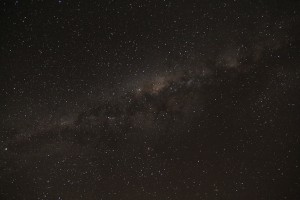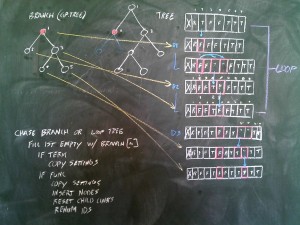 Introduction
Introduction
Like so many kids, I was curious about how the world worked, from the macroscopic starscapes overhead to the microscopic universe under foot. Even at a young age I was systematic about exploration, my research taking many forms. At age five I would crush colorful stones with a hammer, grinding them to learn which would form a fine powder I could use as paint. I collected various species of moss from the neighboring yards and transplanted them, each tagged to learn which would grow well in sun or shade. Encouraged by my parents, my passion for computer programming and astronomy took form at age seven. Jason Zach and I stayed up late to observe the planets, their moons, and nebulae. We kept meticulous records, a log book that I yet hold today.
In high school I enjoyed chemistry and physics immensely, eager to stay after school to conduct experiments too risky for the classroom. Yet when it came to selecting my university education, I was not then aware of experimental physics nor would I have had the courage to try, for I was lead to believe my math skills were inadequate. I earned a five-year BSc in Industrial Design and as en entrepreneur learned to build businesses around my inventions and ideas.
 As CEO of Terra Soft Solutions, developer of the world renowned Yellow Dog Linux and provider of turn-key, high performance computing solutions, I cherished every minute spent with DoE, DoD, NASA, and university researchers. Yet, every time I drove away from a client site part of me felt left behind. I didn’t want to just sell computers to scientists, I wanted to be the one doing the research and making the discoveries. In 2014 I ventured to the University of Cape Town to earn a Masters degree in Applied Mathematics. At times imposter’s syndrome got the best of me, but I pushed through, encouraged by my co-supervisor and friend Arun. Through my research in evolutionary computation applied to the mitigation of noise in radio astronomy, I gained confidence and experience that opened doors, and my passion for science was rekindled.
As CEO of Terra Soft Solutions, developer of the world renowned Yellow Dog Linux and provider of turn-key, high performance computing solutions, I cherished every minute spent with DoE, DoD, NASA, and university researchers. Yet, every time I drove away from a client site part of me felt left behind. I didn’t want to just sell computers to scientists, I wanted to be the one doing the research and making the discoveries. In 2014 I ventured to the University of Cape Town to earn a Masters degree in Applied Mathematics. At times imposter’s syndrome got the best of me, but I pushed through, encouraged by my co-supervisor and friend Arun. Through my research in evolutionary computation applied to the mitigation of noise in radio astronomy, I gained confidence and experience that opened doors, and my passion for science was rekindled.
That effort carried forward into three years working with leading astrophysicists and astronomers at LIGO, the gravitational wave observatories. At Arizona State University I developed SIMOC, a Mars habitat computer simulation which lead me to the University of Arizona Biosphere 2 where my team is constructing a hermetically sealed Mars habitat analog for real-world research and exploration.
I build platforms for research and science education. I help find patterns in the noise, the hidden gems that help us to better understand the intricate nature of the world in which we live. For me, there are few things more exciting than working with a team of intelligent, driven, passionate individuals who want nothing more than to share their discoveries with the world.
